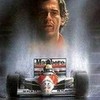- Login or Register
No account yet? Sign up

Nobody wanted to figure out the wheelbase down to the atoms. We just want come as close as possible with the tools we have at hand.marcush. wrote:You still don´t know if the car is moving at right angles to your camera position...let´s assume you got 3300 mm wb and the car is travelling only 4 degrees out of right angle and your mistake is already 10mm...
add to this the steering lock ...not to mention faults caused by the camera lense itself..and we are adding up the mistakes in the same ways as in judging on laptimes with variables.
clearly those 6% variance we got in our picture calculations is rendering the whole exercise as pretty useless especially as some cors that seemed to differ in the first claculations now match in length...so the fault is burried somewhere and it is potentially quite substantial..but fun it is anyways so please don´t stop..
I'm with Marcush here. I've had a little amateur experience with trying to use photographs as an accurate basis for creating 3d models of trains. Photos that look symmetrical or appear to have been taken directly head on can get frustratingly hard to work with, just because they often tend not to be actually anything symmetrical or straight once you actually get a good ruler to work with or some real numbers for lengths.HampusA wrote:Nobody wanted to figure out the wheelbase down to the atoms. We just want come as close as possible with the tools we have at hand.marcush. wrote:You still don´t know if the car is moving at right angles to your camera position...let´s assume you got 3300 mm wb and the car is travelling only 4 degrees out of right angle and your mistake is already 10mm...
add to this the steering lock ...not to mention faults caused by the camera lense itself..and we are adding up the mistakes in the same ways as in judging on laptimes with variables.
clearly those 6% variance we got in our picture calculations is rendering the whole exercise as pretty useless especially as some cors that seemed to differ in the first claculations now match in length...so the fault is burried somewhere and it is potentially quite substantial..but fun it is anyways so please don´t stop..
And i think we are doing a pretty good job of getting pretty close imo.

But this your saying is what we have been knowing all the time since we started doing these measurements etc.tommylommykins wrote:I'm with Marcush here. I've had a little amateur experience with trying to use photographs as an accurate basis for creating 3d models of trains. Photos that look symmetrical or appear to have been taken directly head on can get frustratingly hard to work with, just because they often tend not to be actually anything symmetrical or straight once you actually get a good ruler to work with or some real numbers for lengths.

First of all you need to know the width of the tyres.marekk wrote:why not use those tires in the background as a ruler ?
I think the distance to the tires in background is almost the same for all the cars.HampusA wrote:First of all you need to know the width of the tyres.marekk wrote:why not use those tires in the background as a ruler ?
Then you need to make sure all cars have the same distance to the tyres etc.

You mean 39.6mm ? Because that´s the latest number we have got.marcush. wrote:200mm is a bit more than your average atom...but forget my words I´m all for it ..please go on .

The secret is the quality of the photo if you are measuring wheelbase. The car needs to be at 90 degrees from the camera, not turning towards or away, with the steering straight ahead. Best opportunity when the cars are parked upLegendaryM wrote:Teams dont really give out accuarate wheelbase dimensions now. It might be a good idea to compare these cars to something like the F2007, which has a wheelbase of 3135mm exactly